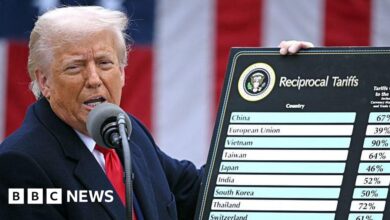Are you “functionally unemployed”? Here’s what the unemployment rate doesn’t show.

The current state of the U.S. labor market is a topic of much debate and scrutiny, with conflicting data leaving many wondering just how healthy the economy truly is. While the official unemployment rate hovers near a 50-year low at 4.2%, a different measure of worker well-being suggests a more troubling reality.
According to a recent report from the Ludwig Institute for Shared Economic Prosperity (LISEP), the “true rate” of unemployment in April was a staggering 24.3%, up slightly from 24% in March. This measure takes into account not only those who are officially unemployed but also includes individuals who are struggling to find full-time work or are stuck in poverty-wage jobs. In essence, it seeks to capture a more nuanced view of the labor market, highlighting the plight of those who are often left behind during periods of economic growth.
LISEP’s True Rate of Unemployment (TRU) distinguishes between part-time and poorly paid work versus full-time, better-paid employment. It argues that the traditional unemployment rate fails to provide a complete picture of the economic landscape, particularly for those who are unable to make ends meet or achieve a decent standard of living. By including individuals who are unable to afford basic necessities like housing and nutritious meals, the measure sheds light on a segment of the population that is often overlooked.
When broken down by race and gender, the TRU reveals stark disparities, with Hispanic, Black, and female workers experiencing higher rates of functional unemployment compared to their White and male counterparts. More than a quarter of Hispanic and Black workers are functionally unemployed, while nearly 29% of female workers fall into this category.
Furthermore, LISEP’s research highlights the struggles of low-income households across the country. Many of these households are earning well below what is necessary to maintain a minimal quality of life, with the average annual income falling significantly short of the amount needed to cover basic needs and expenses.
The discrepancy between the official unemployment rate and the true rate of unemployment is cause for concern, according to LISEP chairman Gene Ludwig. He argues that relying solely on the lower official rate can lead to misguided policy decisions and a false sense of security about the state of the economy. In reality, there is a pressing need to address the challenges faced by middle- and low-income Americans who are disproportionately impacted by underemployment and poverty-wage jobs.
In conclusion, the labor market is more complex than the headline unemployment rate suggests. By incorporating a more comprehensive measure of worker well-being, we can gain a clearer understanding of the struggles faced by many Americans and work towards creating a more equitable and inclusive economy.





